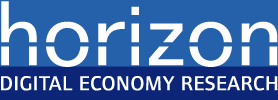Rachel Jacobs talks about ‘Performing the Future’
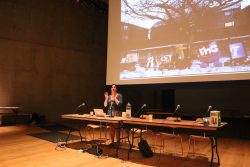
Since 2009 I have been working in collaboration with the Mixed Reality Lab and Horizon on a series of research projects exploring how we develop systems and interactive experiences that engage the public with scientific data. This led to a PhD at Horizon CDT that focused on the unique contributions of artists engaging the public with climate data that included the projects A Conversation Between Trees and Relate (Timestreams) and led to The Prediction Machine artwork.
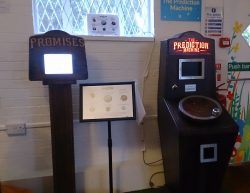
As a result of this work I have started to ask questions on the role of data in our understanding of personal, social and environmental change and the role of data as we look to the future. This led to a new artist led research project in 2017 called ‘Performing the Future‘, that looked at how we might envision positive futures in response to environmental change.
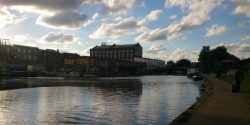
Three workshops took place at the University of Nottingham with Horizon and MRL. The workshops involved small groups that allowed for brain storming and sharing ideas around how scientific data helps us look to the future. The second workshop involved a very diverse group of interdisciplinary researchers from across the university, including respiratory medicine, art history, geography, classics, computer science and mental health. This workshop was co-facilitated by Esther Eidinow, Professor of Ancient History who discussed her research into the Oracle and Fate, Luck and Fortune.
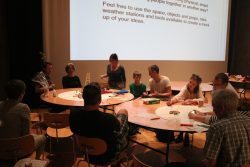
This workshop explored the concept of building future machines that would help us combine scientific data with our everyday lives, and help us to respond to environmental change as the future unfolds. Four prototype machines were designed, these have been written up in the article for the special edition Journal of Risk Research and were displayed during a later event at Nottingham Contemporary. The final workshop explored a proposal to develop the Future Machine model as a broader concept of a performative installation that could bring people together to build a large Future Machine.
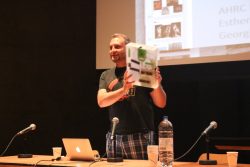
An additional workshop took place at the British Antarctic Survey (BAS) with climate scientists, Horizon researchers and the BAS Innovation and Impact team exploring issues of risk and uncertainty in climate research and how the development of a future machine might help the public engage with these issues.
The collaboration with MRL and Horizon, working with Dominic Price, Lachlan Urquart and later Jocelyn Spence and Laurence Cliffe also focused on the development of the Future Machine model. The first iteration used the promises people make at the ‘The Prediction Machine’ exhibition, developed alongside small interactive electronic devices and a new online system to explore how these digital tools can link up to concrete experiences over long time frames. This involved sending by post clay tablets with the promises embossed in them to 68 people who signed up through the online system.
Alongside this work 10 artist labs took place with the artists Frank Abbott (Nottingham), Juliet Robson (Oxfordshire), Wallace Heim (Cumbria) and Caroline Locke and Matt Watkins (Nottingham/London). Dominic from Horizon supported the ‘When This Tree Blossoms’ artwork developed with Frank Abbott tracking the blossoming of a cherry tree in the Spring in Christ Church Gardens through a live video stream of the tree, an online discussion and social media campaign, leading to an event where people were invited to meet under the tree when it blossomed to discuss the future.
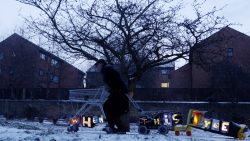
This event enabled us to consider issues around how we meet in both virtual, digital and real, physical space and how the nature of these two realities effects our fears, anxieties, hopes and dreams in our everyday lives.
An extended tour also took place of ‘The Prediction Machine’. This returned the artwork to FACT, Liverpool as part of the New Observatory Exhibition and onto Cambridge Central Library in collaboration with Cambridge Carbon Footprint. Additionally, The Prediction Machine was also exhibited at Polka Children’s Theatre, Wimbledon, London as part of the Techtopia Festival.
The project ended with a diverse afternoon of talks, discussions, artworks and a workshop called ‘When The Future Comes’ also took place at Nottingham Contemporary and the Fate, Luck and Fortune Network. Dominic Price from Horizon presented a talk about his and MRL/Horizon’s collaboration with both me and my artist collective over the last 10 years and the iterations of sensor technologies and systems for capturing and interpreting environmental data that we have worked on together. Finally as part of the workshop Dominic worked with other artists, climate scientists and the public to explore how these technologies might be further developed within the concept of the Future Machine.
